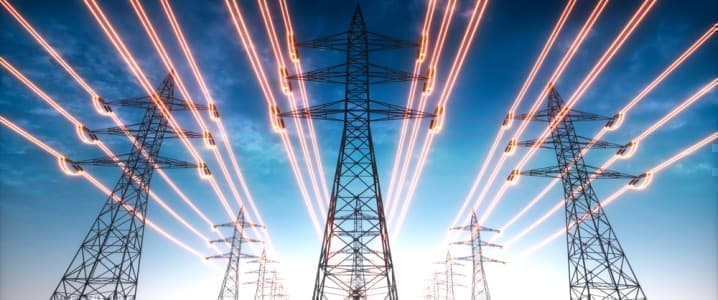In recent years, China has been becoming more involved in Latin America’s energy sector as it expands its mining and other energy-related operations across the region. Meanwhile, over the last year, the U.S. has been looking to Latin America to establish regional energy ties and supply chains to reduce its reliance on Asia, particularly China. But which power is gaining the most traction in the region and will there be any definite winner at the end of the battle?
China has been gradually deepening its economic and security ties with several Latin American countries over the last 20 years, particularly Brazil and Venezuela. However, Beijing now appears to be investing even more heavily in the region, as it surpasses the U.S. as South America’s largest trading partner. China has a strong diplomatic, cultural, and military presence across the region that is prompting concerns from the White House about the competition it may have for dominance in the Latin American energy market, particularly at a time when the Biden administration is looking to develop strong regional ties. It also raises questions over the geopolitical implications.
Latin America exports several products to China, including soybeans, copper, petroleum, oil, and other raw materials in exchange for higher-value-added manufactured products. China has established free trade agreements with Chile, Costa Rica, Ecuador, Peru, and twenty-one Latin American countries, as part of its Belt and Road Initiative (BRI), making it an attractive trading partner. It has also pumped huge quantities of money into the region in the way of project investments and loans, such as those given to Venezuela, in a bid to enhance South-South cooperation.
From 2000 to 2018, China invested around $73 billion in Latin America’s raw materials sector, developing refineries and processing plants in regions with abundant coal, copper, natural gas, oil, and uranium supplies. China has been investing heavily in renewable energy for several decades, becoming the world’s biggest supplier of several key minerals, as well as green energy and clean tech components developed using these minerals. In recent years, Beijing has grown its investment in lithium production – needed for the manufacturing of lithium-ion EV batteries – in the Lithium Triangle countries of Argentina, Bolivia, and Chile. In fact, China is thought to control around 70 percent of the world’s lithium production.
Several Chinese state-owned companies are operating throughout Latin America. PowerChina had around 50 projects in the region by 2022. And it’s not just Chinese energy companies that are tied to the region, with the China Development Bank providing financing for several solar and wind projects in Latin America. In 2019, the bank provided 85 percent of the $400 million required for the development of South America's largest solar farm, the Cauchari project in Jujuy, Argentina.
The increase in China’s involvement and influence in the Latin American region is making the U.S. fearful of both the geopolitical implications of the relationship it is developing with several countries, as well as the impact on the role of the U.S. in the region. Since the Russian invasion of Ukraine in early 2022, which led the U.S. and Europe to introduce sanctions on Russian energy, the Biden administration has been looking to diversify its energy mix and establish regional energy ties and supply chains. The White House has also emphasized its aim to reduce the country’s reliance on Chinese-made products, particularly those that support a green transition, through policies such as the Inflation Reduction Act (IRA), the CHIPS and Science Act, and the Infrastructure Act.
In November, Biden and leaders from Canada, Barbados, Chile, Colombia, Costa Rica, the Dominican Republic, Ecuador, Peru, Uruguay, and Mexico pledged to strengthen supply chains in the Western Hemisphere to counter China’s global influence. The move was announced by the leaders at the inaugural Americas Partnership for Economic Prosperity Leaders' Summit. The various powers agreed to enhance supply chains in clean energy, medical supplies, and semiconductors, and to expand trade links.
Biden highlighted the aim of making “the Western Hemisphere the most economically competitive region in the world.” He stated at the summit, "We want to make sure that our closest neighbours know they have a real choice between debt-trap diplomacy and high-quality transparent approaches to infrastructure and inter-development.” Meanwhile, the senior director of the Atlantic Council's Adrienne Arsht Latin America Centre, Jason Marczak, said the partnership would “set the stage for a new era of U.S. investment in the region.”
While China can offer Latin America large amounts of money for its resources, the U.S. appears to be offering the potential for greater energy and trade security, as well as the opportunity to counterbalance China’s growing global dominance. China already has several major energy and mining projects across the region, which will continue to enhance its position, however, the Biden administration has made a concerted effort to deepen ties with several countries across Latin America to develop regional supply chains, which are likely to become stronger and more expensive in the coming decades, in line with a green transition.
By Felicity Bradstock for Oilprice.com
More Top Reads From Oilprice.com:
- Biden Tells Federal Employees to Use EVs and Trains on Official Travel
- Global Coal Demand Is Set to Hit a Record High in 2023
- Exxon Reportedly To Mirror Peers with Cash Bonuses for Risk Traders


















Much of Central America's 'high dollar' agricultural exports have been directed toward China - the US doesn't need or want beef or pork from Latin America.